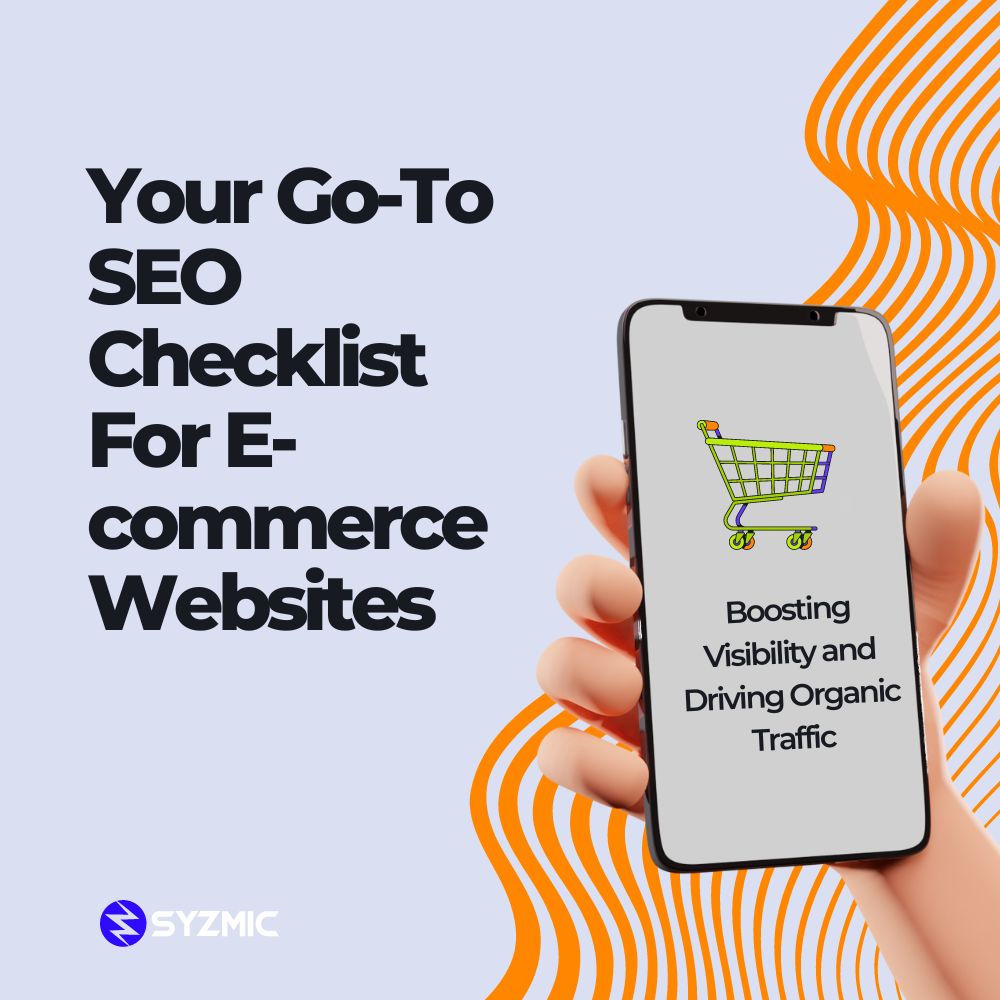In the highly competitive world of e-commerce, having a well-optimized website is crucial for driving organic traffic and gaining visibility in search engine results. To achieve this, implementing effective search engine optimization (SEO) strategies is essential. In this blog post, we will provide you with a comprehensive SEO checklist specifically tailored for e-commerce websites. By following these key steps, you can enhance your website’s search engine rankings, attract more qualified traffic, and ultimately increase your online sales.


- Keyword Research and Optimization:
- Conduct thorough keyword research to identify relevant and high-performing keywords.
- Optimize your product titles, descriptions, headings, and meta tags with targeted keywords.
- Incorporate long-tail keywords to capture specific search queries and drive targeted traffic.
- On-Page Optimization:
- Optimize your website’s URLs, ensuring they are clean, descriptive, and include keywords.
- Create unique and compelling meta titles and descriptions for each page.
- Utilize header tags (H1, H2, H3) to structure your content and improve readability.
- Optimize product images with descriptive file names and alt tags.
- User-Friendly Site Structure:
- Implement a clear and intuitive navigation structure to improve user experience.
- Ensure your website is mobile-friendly and responsive across all devices.
- Improve page loading speed to reduce bounce rates and improve user engagement.
- Implement breadcrumb navigation for easy website navigation and SEO benefits.
- Compelling and Unique Product Descriptions:
- Write compelling, unique, and informative product descriptions.
- Highlight key features, benefits, and unique selling points.
- Avoid duplicate content issues by writing original descriptions for each product.
- User-Generated Content and Reviews:
- Encourage customer reviews and ratings to enhance trust and credibility.
- Implement a review system and display reviews prominently on product pages.
- Leverage user-generated content to increase organic search visibility.
- Technical SEO:
- Ensure your website is crawlable and indexable by search engines.
- Optimize your robots.txt file and XML sitemap for better search engine understanding.
- Fix broken links, resolve duplicate content issues, and improve URL structure.
- Implement structured data markup (schema.org) to enhance search engine visibility.
- Content Marketing and Link Building:
- Develop a content marketing strategy to create valuable and shareable content.
- Promote your content through various channels and engage with your target audience.
- Build high-quality backlinks from authoritative websites to improve your website’s authority and search engine rankings.
- Ongoing Monitoring and Optimization:
- Continuously monitor your website’s performance using analytics tools.
- Track keyword rankings, organic traffic, and conversion rates.
- Identify areas for improvement and implement optimization strategies accordingly.
Optimizing your e-commerce website for search engines is a fundamental step towards driving organic traffic and achieving online success. By following this comprehensive SEO checklist, you can ensure that your website is well-optimized, user-friendly, and visible in search engine results. Stay up-to-date with SEO best practices, adapt to algorithm changes, and continuously refine your strategies to maintain a competitive edge and maximize your e-commerce website’s visibility, traffic, and conversions.








0 Comments